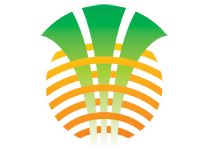Medical Emergency Communication Through Social Media: Crisis Response
When a health crisis strikes, social media becomes an essential tool for communication. You might not realize just how quickly you can receive vital updates through these platforms. As health organizations aim to inform the public, strategies to ensure accuracy and clarity play a significant role. But what really enhances trust during these emergencies? Let's explore the effective approaches that can make a difference.
The Significance of Social Media in Health Crises
As health crises develop, the role of social media becomes increasingly significant; it functions as an important tool for real-time communication.
Approximately half of U.S. adults utilize social media platforms for news, which has made these channels integral for public health organizations. These platforms facilitate the dissemination of updates and safety guidelines effectively and enhance communication during crises.
Agencies such as the CDC and WHO have utilized visually engaging posts to communicate important information during the COVID-19 pandemic.
Furthermore, social media allows health officials to promptly inform the public, assess public sentiment, and address misinformation, ensuring that audiences receive reliable health information when it's most needed.
Strategies for Effective Communication During Emergencies
The role of social media in health crises highlights the importance of effective communication strategies during emergencies. Effective communication can be achieved by prioritizing the dissemination of real-time information through posts that include visuals and relevant endorsements. This can help capture public attention and provide clear messaging.
It is also essential to utilize social media as a two-way communication channel. This allows organizations to monitor public sentiment and address misinformation promptly, which is critical in maintaining trust during a crisis. Regular updates, live broadcasts, and opportunities for interactive commenting can keep audiences well-informed and engaged.
Furthermore, developing a comprehensive communication strategy with predefined roles before an emergency is vital. Such preparation provides clarity and effectiveness in emergency communication and can enhance the ability to navigate high-pressure situations with greater efficiency.
Real-Time Engagement and Public Interaction
Real-time engagement can significantly enhance public interaction during medical emergencies. By utilizing social media platforms, health organizations have the capacity to disseminate timely updates and connect directly with the public. Channels such as Twitter and Facebook allow for the rapid sharing of critical information, while live broadcasts can facilitate real-time interaction between health officials and the community.
This strategy serves multiple purposes. Firstly, it enables organizations to address public inquiries promptly, which can help mitigate anxiety during health crises.
Secondly, real-time engagement is effective in correcting misinformation, thus improving the overall quality of communication. Moreover, when health professionals engage directly with comments from the public, it can foster a sense of trust and transparency.
By providing regular updates, health organizations can ensure that communities are informed and prepared for potential emergencies, which is vital for effective public health management.
Leveraging Visual Content for Message Clarity
Visual content is an important tool for enhancing message clarity in health emergencies, where rapid comprehension is crucial. Media formats such as infographics and videos can simplify complex health information, allowing audiences to quickly understand essential messages.
Research has shown that during the COVID-19 pandemic, posts containing visual elements on social media platforms had an 80% higher share rate compared to those that relied solely on text. This indicates that visual storytelling can be effective in reaching a wider audience, thereby improving overall understanding of health messages.
The use of engaging visuals can help convey public health guidelines more effectively, which is particularly important in mitigating the spread of misinformation during crises. Clear and well-designed visuals play a significant role in effective health communication on social media, making it easier for diverse audiences to interpret and act on important information.
Thus, incorporating visual content is a strategic approach to enhancing the clarity and impact of health messaging in urgent situations.
Monitoring Public Sentiment and Countering Misinformation
Effective health communication requires not only clear visuals but also a thorough understanding of the audience's perceptions and concerns. Monitoring public sentiment through social media can offer insights into community worries, allowing organizations to adjust their messaging accordingly in real-time.
This approach has proven beneficial in crisis situations, such as the COVID-19 pandemic, where health organizations actively tracked and countered misinformation using infographics and clarifications. Such strategies have been shown to enhance engagement and the dissemination of accurate information.
Research indicates that approximately 50% of U.S. adults depend on social media platforms for news, making it essential for health organizations to provide timely and accurate information. Engaging directly with the public allows organizations to address misinformation effectively, thereby building trust with the community.
This process is vital for establishing credibility, especially during health emergencies, as it reinforces the organization's role as a reliable source of information.
Building Trust Through Consistent Updates and Transparency
Trust is essential for effective communication during health crises, and consistent updates are crucial for fostering that trust. In emergency situations, utilizing social media platforms can facilitate the dissemination of timely information, which contributes to transparency and reassures the public.
Research indicates that regular updates can help counteract misinformation and alleviate anxiety, as clear messaging tends to enhance audience engagement. Encouraging audiences to ask questions further promotes transparency, thereby increasing the credibility of the communication.
It's important to note that withholding information can lead to distrust among the public. By maintaining an open dialogue, agencies communicate their recognition of the public's demand for timely and honest information, especially during challenging situations.
This approach is supported by evidence that emphasizes the role of transparency in public health messaging and reinforces the importance of consistent, factual communication across various platforms.
Conclusion
In times of medical emergencies, social media isn't just a tool—it's a lifeline. By using this platform to communicate effectively, you can keep your community informed, engaged, and prepared. Emphasizing real-time updates, visual content, and open dialogue fosters trust and counters misinformation. So, as you navigate the complexities of crisis response, remember that your clear and transparent communication can make all the difference in ensuring the health and safety of those around you.



